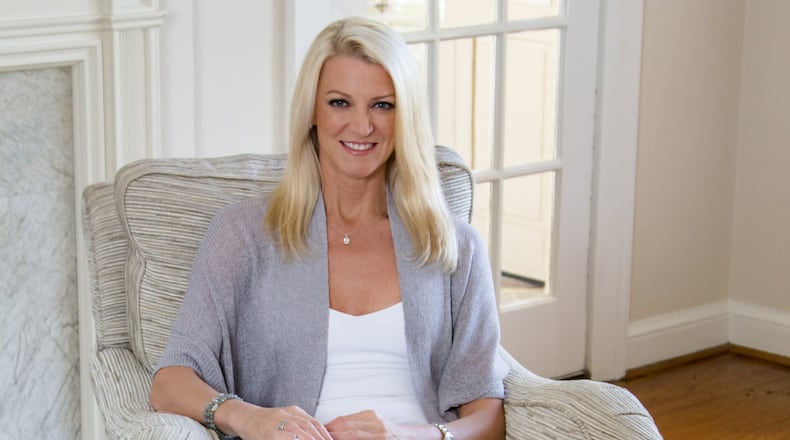The idea of a “good divorce” might seem as absurd as good grief or sweet sorrow, but wait until you meet Sarah Armstrong.
Armstrong is a 48-year-old Atlanta marketing executive and mother of a teenage daughter. She also wrote the book on, well, how to achieve a good divorce, suggesting not only that it is possible to have a good divorce but to maintain one.
Indeed, it’s been suggested that Armstrong is its poster child.
And, having met her, she indeed looks the part. She’s happy. She’s at peace. And the best part? So is her 17-year-old daughter.
When she and her ex-husband decided to part ways in 2009, it was one of the hardest things she’d ever done.
The couple had spent 17 years together, 12 of them as husband and wife, and so the breakup, Armstrong said, was hard.
All her life, her parents, married for more than 50 years, had modeled for her what a true partnership looked like.
“I thought I had that in my marriage,” she said. “The loss of that picture was really hard, but I had a clear view that if it wasn’t going to be that way, then I could create a different picture.”
RELATED | January’s a popular time to divorce your partner
I should hasten to say here that Armstrong isn’t an advocate for divorce.
“No one gets married to get divorced, and no one gets divorced for positive reasons,” she said recently. “Children do not get to decide, yet their lives are the most impacted by the decision.”
Actually, U.S. marriage and divorce rates have both decreased in the past 10 years, but the damage to children of divorce, sadly, is unchanged. Studies show that children of divorce are more likely to experience behavioral problems, are less likely to graduate from high school, more likely to be incarcerated, almost five times more likely to live in poverty, and much more likely to engage in drug and alcohol use, as well as sexual intercourse.
The Armstrongs would have none of that.
Instead of fighting as couples typically do, Armstrong and her ex-husband made the decision to take an approach to co-parenting that would ensure their daughter would have as normal a life as possible. From continuing traditions for trick-or-treating on Halloween to jointly celebrating their daughter’s birthday to reviewing report cards together, the couple wanted to ensure that special moments and some of the day-to-day that involved their daughter were not overshadowed by the divorce.
Friends and colleagues noticed. Some who were experiencing breakups themselves sought her help.
RELATED | Divorce rate would plunge if more followed in Prince Harry’s steps
One night over a business dinner in Latin America, a colleague turned to her and said, “You’re so happy.”
“I am,” Armstrong responded, incredulous.
“But you’re divorced,” he said.
Being divorced is not a death sentence, Armstrong answered. “My ex-husband and I decided to no longer be married, but just because we made that decision doesn’t mean that we can’t be happy or that (our daughter) can’t be happy.”
As she helped friends navigate their own journey to a good divorce, they encouraged her to write down the advice she shared in a book.
Credit: The Atlanta Journal-Constitution
Credit: The Atlanta Journal-Constitution
The day after her conversation that night in Latin America, Armstrong boarded a plane to Cabo, opened her laptop and wrote the first line: “This is written by a girl who never, ever thought she would get a divorce, who ended up getting a divorce and what she learned along the way.”
Plane ride after plane ride, over the next 18 months, she captured the advice she had shared with her girlfriends and gathered additional input from them along the way.
RELATED | Life after Chipper Jones and divorce
Armstrong was on a flight to California in 2015 when she opened the file and asked herself if she were ever going to do anything with what she’d written.
By December 2015, she'd finished writing. On July 11, 2016, "The Mom's Guide to a Good Divorce: What to Think Through When Children Are Involved" was on bookshelves and Amazon.com.
For anyone who finds themselves on a path to divorce, she offers some good, practical advice, in “bite-size pieces” that allow for reading on an as-needed basis. To start, focus on minimizing as much as possible the impact of children living in two places. For instance, if you are able, make sure all the children’s basics are at both houses so they aren’t packing a bag every week; continue to attend parent-teacher conferences together and please make time to take care of yourself.
In all, she addressed 150 different topics.
Recently, Armstrong decided to do an update in which she adds 35 more topics, also aimed at changing the narrative on societal norms of a bitter divorce.
It is no secret that divorce imparts negative interaction between parents, as depicted in the acclaimed movie “Marriage Story,” and this negativity has a lasting impact on children.
Armstrong is convinced divorce done right doesn’t have to have lasting negative consequences.
“Divorce does not need to be a scarlet letter,” Armstrong said. “It is a process you go through, but why should it define you? Why is there a belief in society that if you decide to get divorced, then the rest of your life and your children’s lives cannot be happy? When people hear the term ‘good divorce,’ there is some skepticism, but why is it that a good divorce isn’t the expectation?”
Good questions.
Find Gracie on Facebook (www.facebook.com/graciestaplesajc/) and Twitter (@GStaples_AJC) or email her at gstaples@ajc.com.
About the Author
Keep Reading
The Latest
Featured





